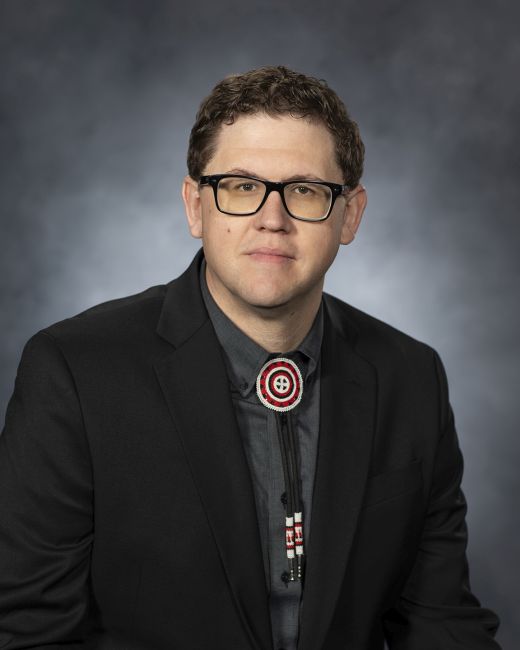Immersion program seeks Chickasaws to carry on language

This article appeared in the February 2022 edition of the Chickasaw Times
The Chickasaw Nation’s Chikasha Academy Adult Immersion Program is now accepting applications for the 2022-2024 program. The exclusive program is a three-year, 40-hour per week regimen in which participants learn the Chickasaw language while being compensated.
“It’s an intensive, structured group immersion,” Chickasaw Nation Language Preservation executive officer Joshua D. Hinson (Lokosh), said. “Our goal is to create conversationally fluent speakers who can communicate with one another and with native speakers of Chickasaw, and who can effectively teach the Chickasaw language to others.”
Participants will learn from second language and master-level fluent speakers of the Chickasaw language. Students are immersed in the language for up to eight hours a day. Those who complete the program will be the next generation of Chickasaw language speakers.
The program begins February 2022 and selection is limited. Applications can be submitted online at Chickasaw.net/LanguageAcademy.
The Chickasaw Nation created the Immersion Program as part of a language revitalization initiative. The Chickasaw language is endangered. It is estimated there are fewer than 35 native speakers of the Chickasaw language, all over age 60.
In the Immersion Program, Chickasaw language learners meet daily to communicate conversationally in Chickasaw, allowing individual words to be learned, then moving toward more advanced fluent speech.
“Language is perhaps the most fundamental defining feature of a people, and today, our most scarce, precious and valuable resource,” Mr. Hinson said. “The language encompasses our history, our culture, our worldview and the worldview of our ancestors. The most powerful expression of the language is a medium of daily conversation, talking to one another about significant things, just as our ancestors did.
“We prioritize conversational speech because that is what the ancestors would want us to do. If we do not accept this responsibility, our language will go to sleep, and we will be all the poorer for it,” he said.
All things considered, Mr. Hinson said, those individuals learning through the Immersion Program may one day be the only living conversational speakers of the Chickasaw language. The current state of the Chickasaw language is similar to that of most tribes in the U.S.
Fewer than 20 languages spoken by tribes in the U.S. are projected to survive another 100 years. The Immersion Program, along with other initiatives provided the Chickasaw Nation, will help to ensure the Chickasaw language continues to be spoken.
While the decline of the Chickasaw language has been a concern for generations, a concerted effort to develop newly-fluent speakers of Chickasaw throughout the Chickasaw Nation began in 2007. This represented an effort built on the grassroots efforts of Chickasaw speakers who cared about their language and wanted to see it survive into the future.
These native speakers include the late Reverend Jess J. and Vinnie May James Humes, teachers including the late Yvonne Alberson and the late Geraldine Greenwood, as well as countless other native speakers who contributed to the modern Chickasaw language revitalization movement.
The Immersion Program is the newest and perhaps most robust tool in the revitalization of the Chickasaw language, but it is just one of many tools available through the Chickasaw Language Revitalization Program.
Rosetta Stone Chickasaw was created at Governor Bill Anoatubby’s direction to ensure all Chickasaws, regardless of where they live in the world, could have access to high quality, compelling language learning products. Today, Chickasaw Nation Rosetta Stone has more than 8,015 active licenses.
Videos featuring native speakers of Chickasaw can be viewed on the Chickasaw Nation Culture & Humanities YouTube page, as well as on Chickasaw.tv.
The first dictionary of Chickasaw, authored by Reverend and Mrs. Humes and published in 1973, is now a website with embedded audio, accessible at AChickasawDictionary.com. The language also has a presence on social media, including Instagram, Twitter and SnapChat.
Other local community-based resources include Chipota Chikashshanompoli “Children Speaking Chickasaw” Language Club, four semesters of Chickasaw offered at East Central University and a language pilot project at Byng High School, among many other language-related programs and services.
“All these resources are available to Chickasaw citizens worldwide,” Mr. Hinson said. “Whether you want to be fully conversational or just introduce yourself in your native language, there is a resource for you.
“We want people to simply learn something and say something in Chickasaw, and teach what they know to someone else. In so doing, we are giving our language new life and contributing to the mission to enhance the overall quality of life of the Chickasaw people.”